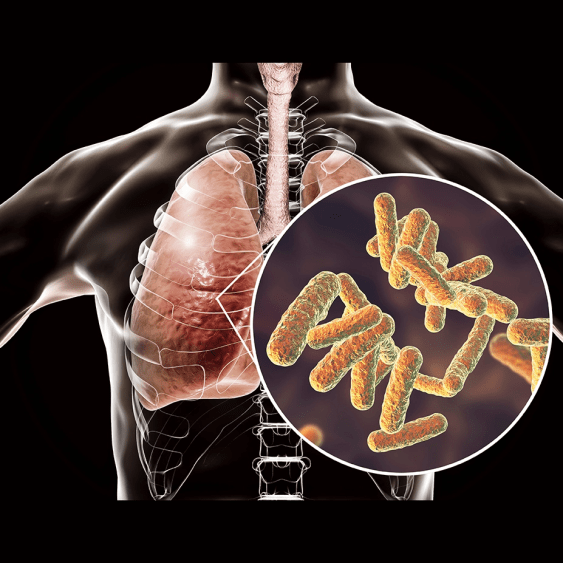ESPID 2023: Acute Gastroenteritis Prevention — Where Are We Now?
The session discussed universal rotavirus vaccination in Europe, norovirus and the prospects for primary prevention and the remaining challenges in enteric fever.
The first session discusses the rotavirus vaccination in Europe and the divided opinions presented by 2 speakers. The first speaker, Dr. Martinon-Torres, focuses on the benefits of vaccination. With respect to rotavirus vaccination, only 18 countries in Europe have rotavirus vaccination included in the National Immunization Program. Despite recommendations by the World Health Organization (WHO), rotavirus vaccination is low due to cost and vaccine supply, perception of the disease, safety concerns and cultural and social factors. However, there is sufficient evidence to show the benefits of rotavirus vaccines. In some European countries, the before and after reductions in hospitalization are around 55%, an average in any European country that has introduced rotavirus into their national immunization program. With regards to the safety of the vaccine, a study in England has demonstrated no change in the overall intussusception rate in countries with rotavirus universal vaccination. There is a downward shift in the age at which intussusception occurs, but it has not been a public health problem. There is a need for targeting strategies reaching the high-risk group; however there are limitations to the targeted strategies and targeted approaches are difficult to perform. In addition, there is less individual benefit and public health impact. While the perception regarding rotavirus in Europe is that it is not a serious disease, the data shows that the disease is associated with increased hospitalization and mortality. It is estimated that around 6550 children may die from rotavirus in the European region and there is an added economic burden. Some additional benefits of the rotavirus vaccine are the reduction in hospitalization due to seizures and delay or reduction of the incidence of type 1 diabetes. The WHO recommends universal vaccination against rotavirus in every country, and in Europe, the vaccination can provide real-life benefits. The second speaker, Dr. Shamez describes the shortcomings of the vaccination. Intussusception is a serious condition for a virus such as rotavirus that causes diarrhea. The first rotavirus vaccine (1998) was withdrawn in less than a year for the risk of intussusception. The new vaccines are safer than the older vaccines, but they're still not completely safe. Clinical evidence has shown that the relative incidence of intussusception is six times higher after the first dose and nearly two times higher after the second dose. The safety data of Rotarix has shown that of the 557 hospitalizations, 53% required surgery for a vaccine that prevents diarrhea and 17% needed bowel resections. In France, the rotavirus vaccine program has been discontinued as 3 children have died due to the rotavirus vaccine. Intussusception is not caused by the rotavirus but is an effect of the vaccine. If the vaccine is given in a neonatal unit, there is a possibility of transmission of a live attenuated virus in a neonatal unit with premature babies. If the babies are immunocompromised, they could develop severe combined immunodeficiency. Rotavirus almost never kills in countries that can afford this vaccine. Rotavirus infection is mild, self-limiting and non-fatal in Europe. It rarely kills healthy infants, but the vaccine can cause intussusception, which can be severe, require surgery, bowel resections or could even lead to death. In the context of this discussion, many countries have adopted the COVID-19 vaccine as universal vaccination in children. Among the evidence, while there are close to 6000 deaths due to rotavirus, the vaccine associated with intussusception is in around 1100 cases. While the rate of intussusception is low, awareness in the healthcare system can help manage it better. The risk of intussusception is different across countries due to the background rates, the surveillance systems and the actual detection and identification of the cases.
The strain type also affects immunity and susceptibility to norovirus infection with-short term immunity against reinfection with the same strain. It is unclear if it offers protection against other strains. There are some genetic correlates of susceptibility or resistance, specifically in individuals who have the FUT2 referred to as secretors. About 20% of people of European and East Asian descent are not secretors, and that proportion is lower among other ethnicities. The Centre for Disease Control (CDC) guidelines for Norovirus Prevention and Control recommend appropriate hand hygiene and prompt and thorough disinfection of surfaces. High-risk foods like shellfish also need to be cooked until at least 145 degrees Fahrenheit. It is important to manage and exclude ill people from particular settings, especially healthcare workers and food handlers who may contribute to large outbreaks. The outbreak data from the United States shows winter seasonality, where the peak infections occur. In 2020, the measures that were implemented to prevent the spread of COVID-19, such as social distancing and other non-pharmaceutical interventions, were also good at preventing norovirus infections and outbreaks in that period. The norovirus outbreaks were reduced by 80% and were much smaller when they occurred, with fewer reported cases per outbreak. However, when these measures were lifted towards the end of 2021, the norovirus outbreaks once again increased. Norovirus is not yet vaccine-preventable, and there is a need to know more about the genotypes or strains to include in a vaccine to achieve the highest cross-protection and the age group to be targeted on the burden. Genotype-specific immune responses and antigenic variation suggest the need for a polyvalent norovirus vaccine whose formulation should be updated with the emergence of new strains. There are several norovirus vaccines which are being developed and are in the preclinical stages or phase II trials. Studies on intramuscular bivalent forms with GI.1 and GII.4 strains have shown that as the disease becomes more severe, the vaccine is better at preventing more severe disease. There is a higher prevention against strains that are included in the vaccine. With respect to age group, young children and older people both have a very high disease burden; young children have a high transmission risk, highest overall incidence and high hospitalization rates. The elderly have the greatest burden of fatal diseases and have a much higher cost of hospitalizations compared to children. The rotavirus vaccination programme conducted in the US has some indirect benefits to the older age groups, as seen by 69% reductions in rotavirus hospitalizations across all ages. Healthcare workers can spread infection from patient to patient, while food handlers have been found to be the source of food-borne norovirus outbreaks. The military is another group with a high disease burden and loss of duty. Long-term care facilities have the greatest number of reported outbreaks, with 78% due to gastroenteritis due to norovirus. Restaurants and daycare facilities also have high norovirus outbreaks. About 9 to 16% of travellers' diarrhea is due to norovirus. Immunocompromised patients, who have both a high disease burden and high transmission risk, can suffer severe complications due to norovirus. They have persistent viral shedding up to months or years after a norovirus infection. There are some challenges that need to be addressed with respect to norovirus infections. They are the role of a prior infection history, duration of vaccine protection, protection by a vaccine strain against multiple genotypes, the need for bivalent vaccines or multivalent vaccines, different vaccine formulations for different groups and variations in human genetic susceptibility.
The session discussed the remaining challenges of enteric fever. In pediatric studies, diarrhea is associated with typhoid. The target of vaccination for enteric fever is very young children, as the highest incidence in most countries is among school-age children. The challenge is that there are many people living in cities where there is a poor quality water supply or no water supply and inadequate sanitation. Vaccination is a way to protect children while the water and sanitation challenges are tackled. The burden of enteric fever is driven mostly by typhoid and paratyphoid, with the highest incidence in South Asia. The spread of resistance genes that are carried with enteric fever and bacteria is concerning. The XRD typhoid has typhoid strains which are resistant to conventional antibiotics and cephalosporins and sensitive to carbapenems and azithromycin. Studies conducted in Bangladesh, India and Nepal have shown high rates of typhoid. If a child has suffered five infections during their childhood, they become sufficiently immune to not have symptoms. The first typhoid vaccine (1896) used in South Africa on soldiers was highly reactogenic, painful and made the soldiers ill. An analysis conducted after the war revealed that more soldiers died in the war from infectious diseases, particularly typhoid than from the bullets in the battles. This shows that when one is exposed to a high burden setting naive to the organism without antibiotics, there is a huge health risk. A human challenge model was used to accelerate the use of newer-generation vaccines. In the challenge, the typhoid bacteria was drunk by volunteers in a bicarbonate solution. After a few weeks, some volunteers developed typhoid, and there was an increase in the levels of C reactive protein and fever. The volunteers were treated with antibiotics, and they fully recovered. From this model, it was observed that some people are completely resistant, and interestingly, some individuals are completely asymptomatic despite having positive typhoid cultures. A new conjugate vaccine which was being developed by Bharat Biotech in India, was tested against control vaccines in volunteers. The volunteers were then challenged after a month to drink vials of typhoid to see whether the vaccine would prevent them from getting the infection. It was found that those who were vaccinated had a much lower rate of typhoid compared with those in the control group and point estimates of efficacy of 50%. The WHO Policy Committee (2017-18) then advised the countries with a high burden to use this vaccine for all children under the age of 15 years. There is a need to develop data on how the vaccine could be implemented. Randomized clinical trials conducted in Malawi, Nepal and Bangladesh on children between 9 months and 15 years of age showed that the 2-year efficacy for the vaccine (Nepal and Malawi) was about 80% and 80-85% in Bangladesh. There was a huge reduction in the burden of the disease. The trial included 70,000 individuals in Bangladesh, and the estimated efficacy in a younger age group (babies) was about 80%. In the middle of the pandemic, Pakistan vaccinated a million children per day (February 2021); in Nepal (2022), 7.5 million children were vaccinated in the first quarter of the year. The cluster randomized trial in Bangladesh in 150 geographic clusters randomized to either the typhoid vaccine or the Japanese encephalitis vaccine showed that no significant herd immunity was induced. The typhoid vaccine offers good protection for all ages for the first few years. A study in Malawi has shown that children < 2 years have an efficacy of about 70% till they are 4 years old, whereas older children still retain an efficacy of about 80%. Paratyphoid is a challenge as it causes exactly the same disease as typhoid, and there are no vaccines available for it. A study in China has shown that after the introduction of the typhoid vaccine, the disease incidences were reduced; however, paratyphoid emerged. However, a direct association between them is not established. There are several prototype paratyphoid vaccines, such as the live attenuated vaccine from the University of Maryland in partnership with Bharat Biotech and the bivalent paratyphoid vaccine by Serum Institute of India and Biological-e. These are being tested in the human paratyphoid challenge model, which can pave the way for a large-scale clinical trial. There are still some remaining challenges, such as transmission cannot be managed by immunizing children, the lack of data showing the duration of protection in younger age groups, the possibility of elimination with vaccines alone and the efficacy of a paratyphoid vaccine. While vaccines clearly have a huge impact, the importance of clean water and adequate sanitation is essential for the elimination of the disease.
European Society for Paediatric Infectious Diseases (ESPID) 41st Annual Meeting 2023, 8 – 12 May 2023.




